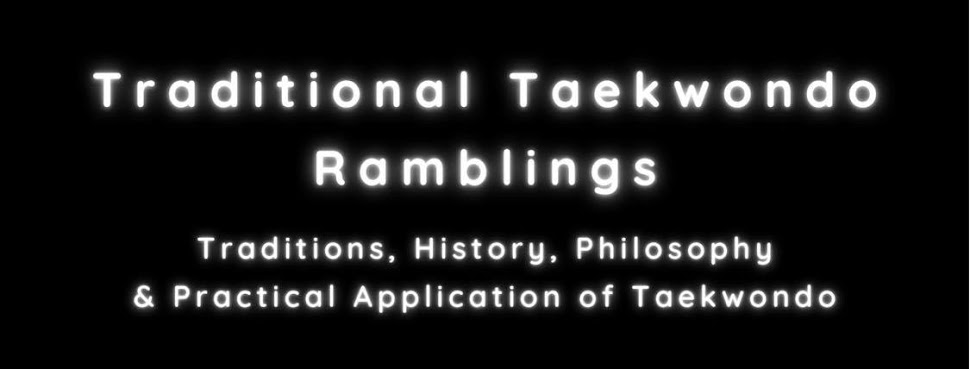Not odd becuase we do normally stress leg techniques over hand techniques, but odd because we have just about every hand technique that you would find in any Karate style. Again, many have a superficial knowledge about Taekwondo, and it does not help that:
- Many hand techniques never appear in Poomsae
- Many who practise Taekwondo to later convert to other styles only learn rudementary or basic Taekwondo.
An example of traditional taekwondo one step sparring focusing on hand techniques can be seen below:
As you can see it contains a lot of "dead hands", but most importantly it is very much a one strike and then finish affair. There is no flow, and very little in terms of combinations. There is a lot of good in them too, as long as you do not stress this as the be all and end all of partner training. You move forward at an angle and parry and strike at the same time etc. It is simply one tool in the tool box, but sadly for many Taekwondoin it is the only tool in their training tool box. The lack of "flow", combinations and other qualities like "sticking" to the opponents limb, establish control, working from clashed limbs made me look at how the root martial arts of Taekwondo trained the hand techniques for application. I found A LOT of stuff burried in Taekwondo's history, but one thing that I would like to share is a three point flow drill template which I have made a lot of use of. This template can be found through much of Asia, so you would be forgiven if you believe this to be me "stealing" it from (INSERT SOME MARTIAL ART STYLE HERE), and it not being directly related to Taekwondo, but this is from our martial roots, and to my way of thinking that means it is just as much "Taekwondo" as any strike, kick or makki-technique that we normally think of when we say Taekwondo.
There are essentually 3 very basic templates all doing the same thing:
Template 1; Bakkat Makki:
Here we start out with a bakkat makki or outward block. It can be a high block or a normal outward block, that depends on the opponents attack. The way I usually teach it the opponent does a haymaker to the head, which the defender then stops with a high block, the other hand comes up underneath to control the arm, and then the first arm pushed the attacking arm away before the defender delivers a haymaker of his own, thereby switching roles. You then get three points of contact (block, pass, push/control) which you repeat as long as you wish. If you want to change arms without stopping the drill you let the attacker deliver a second haymaker instead of you delivering one. This allows you to change arms imidiatly. So the main thing that makes this one unique is the attack (Haymaker), and the starting contact point (outward)
This is just the first post in a series of posts, so I will go more into detail in part 2:-) Stay tuned:-)
I hope to provide much more video content to this blog in the future. I have therefore set up a GoFundMe page on www.gofundme.com/traditionaltaekwondoramblings which I hope I can crowdfund a video editing software so I can make good quality videos for the blogs readers. If you want to contribute please visit the link to my GoFundMe page. Every donation helps :-)


No comments:
Post a Comment